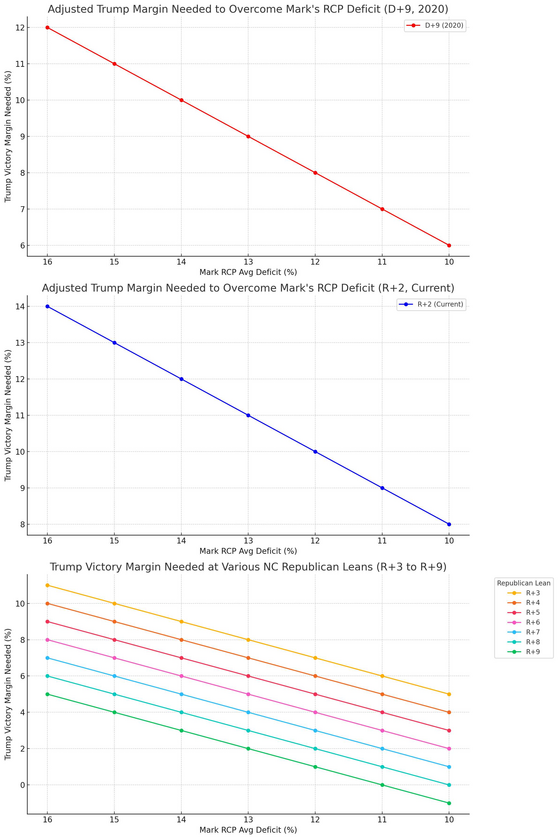Mark Robinson’s Path to Victory: A Data-Driven Look at the NC Governor’s Race
With just 15 days left until the election, early voting data from October 18, 2024, shows a significant shift in North Carolina’s electorate, moving from D+9 in 2020 to R+2 now—a swing of 11 points in favor of Republicans. This change provides Mark Robinson with a better chance of closing his polling gap against Josh Stein, but several key factors must align for him to succeed.
Trump’s Influence and the Coattail Effect
Robinson, currently trailing by up to 16 points in RealClearPolitics (RCP) averages, will rely heavily on a strong performance from Donald Trump to generate coattail momentum. For Robinson to overcome his deficit, independent voters must break for Trump and align with Robinson as a close facsimile of the former president. This alignment could shift critical votes in Robinson’s favor, especially if voters resist North Carolina’s historic tendency toward split-ticket voting.
Recent elections show that straight-ticket voting has grown nationwide [1][2], and Robinson will need to capitalize on this trend to win. If Republican voters support Trump and continue voting GOP down the ballot, Robinson’s path to victory becomes clearer.
Chart 1: Adjusted Trump Margin Needed to Overcome Mark's RCP Deficit (D+9, 2020)
This chart shows the margin Trump would have needed in the D+9 electorate from four years ago for Robinson to close the polling gap.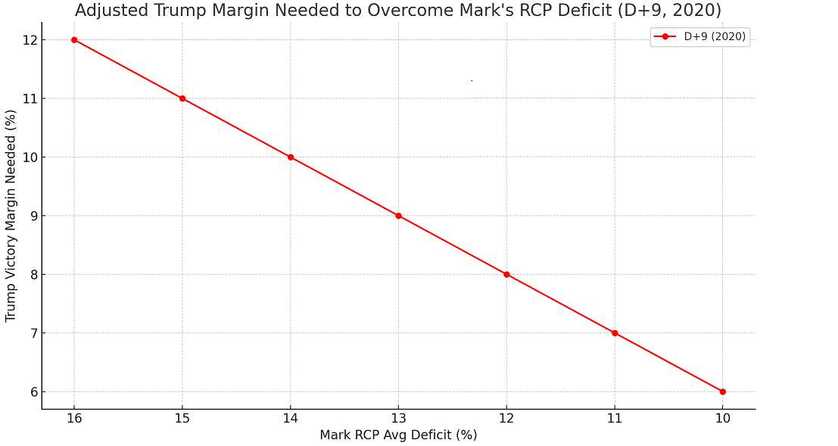
Chart 2: Adjusted Trump Margin Needed to Overcome Mark's RCP Deficit (R+2, Current)
With the current R+2 electorate[3], the required Trump margin drops, reflecting the favorable shift for Republicans since the last election cycle.
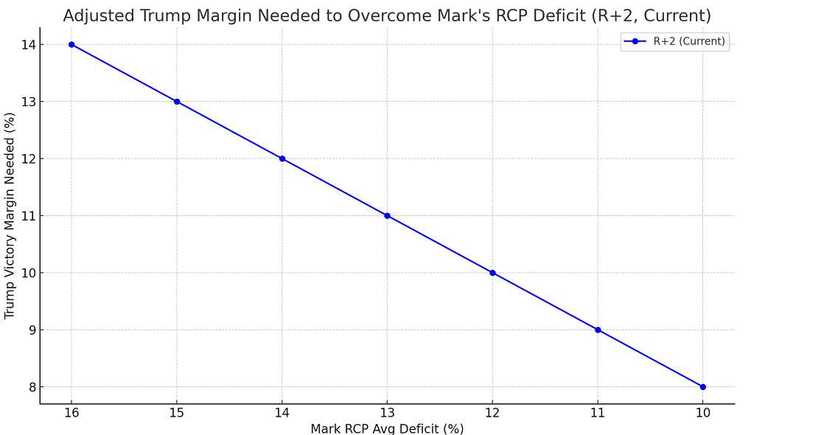
Chart 3: Trump Victory Margin Needed at Various NC Republican Leans (R+3 to R+9)
The final chart outlines what Trump’s margin of victory in North Carolina must be for Robinson to overcome his polling deficit, based on different Republican leans in the electorate.
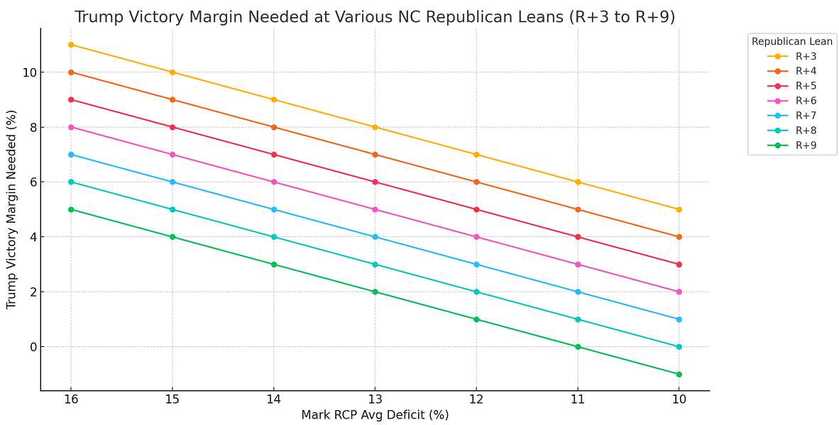
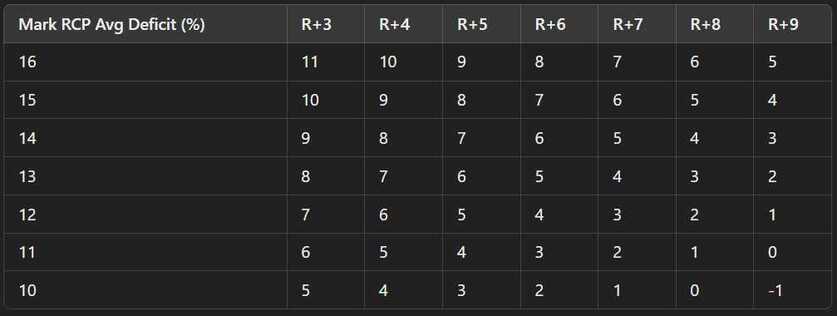
Conclusion
With just two weeks remaining, Robinson's path to victory is narrow but achievable. The shift to an R+2 electorate gives him a critical advantage, but much depends on independent voters seeing him as aligned with Trump’s vision. If Trump performs well and Republicans vote straight-ticket, Robinson could close his polling deficit and win the governor's race. The coming days will be decisive as both campaigns race to the finish.
Sources:
[1]
https://thepoliticswatcher.com/pages/articles/us-politics/2024/10/9/end-straight-ticket-voting-implications-democracy
[2]
https://www.pewresearch.org/politics/2020/10/21/large-shares-of-voters-plan-to-vote-a-straight-party-ticket-for-president-senate-and-house/
[3]
https://www.oldnorthstatepolitics.com/2024/10/what-can-NC-early-voting-tell-us.html#more
